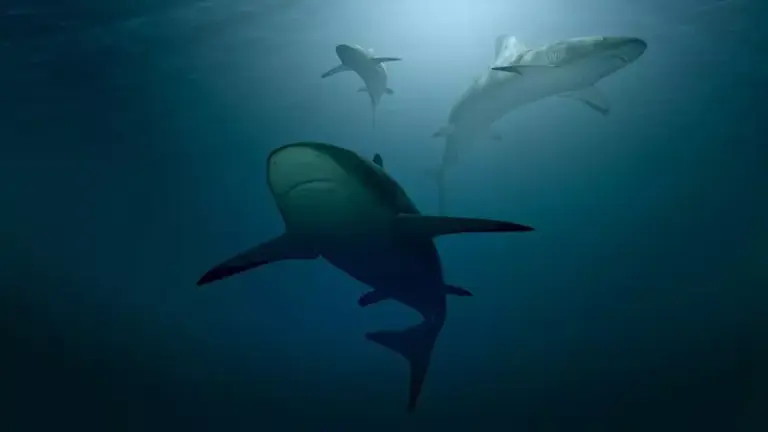For so many of us, the great white Shark from Jaws is the first thing we think of when we picture Sharks. We see them as terrifying, ferocious predators, that are an enemy to anything swimming in the sea. But there are so many different species of Sharks, some of which you’ve probably never heard of before, all with different traits and features. Today, we’re going to dispel some of the biggest misconceptions about Sharks.
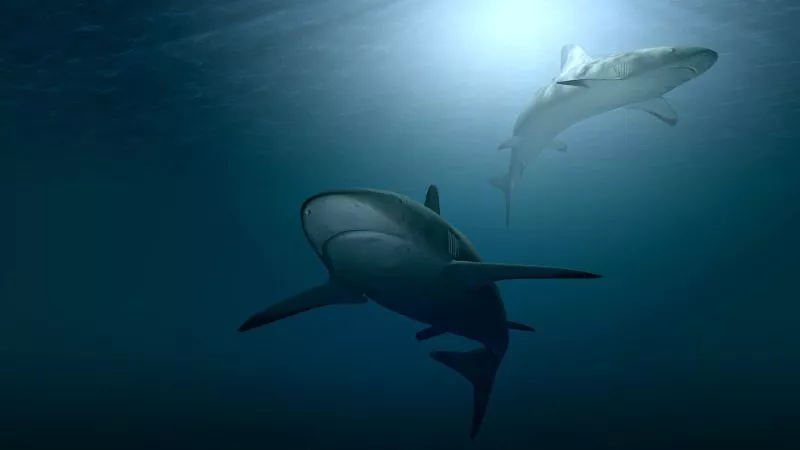
#1. Hunting Skills
Sharks have a reputation for being fearsome predators, but many species of Sharks are actually rather lazy when it comes to finding their next meal. After all, why exert a ton of energy chasing down your prey when you can just use your keen senses to detect an already prepared meal? Even great white Sharks have been caught scavenging for food. In fact, scientists believe that great whites may scavenge on whole carcasses far more often than we once thought. They even got their name, great white, because they would expose their white underside to hunters during the whaling era when they were seen eating diseased Whales. When observed in waters containing ample amounts of fur seals, great whites would choose to munch on a nearby whale carcass instead. Tiger Sharks are another well-known type of Shark that isn’t above a free meal. They have excellent eyesight and a great sense of smell, which makes it no problem for them to detect easy sources of food. While these Sharks are known for being fierce and fearless, they’re more likely than not going to use these traits to chow down on food that’s already no longer living.
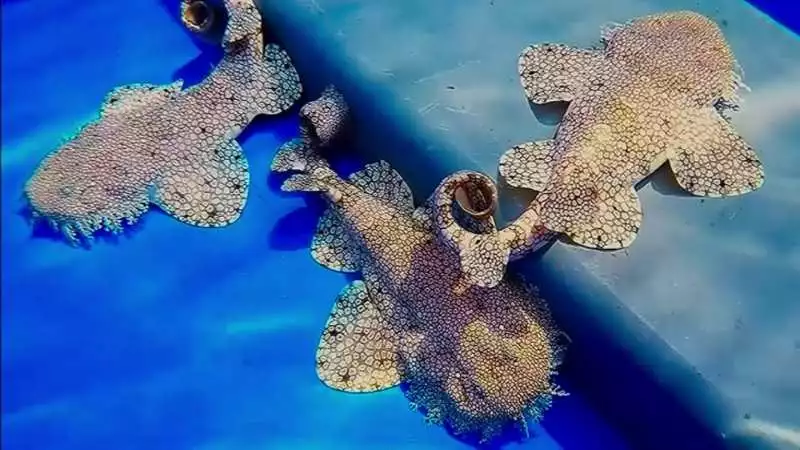
#2. Camouflage
Okay, so maybe Sharks aren’t the ferocious predators we always thought they were, but surely the mighty Sharks don’t need to hide on the seafloor! Well, tell that to the Wobbegong Shark. There are 12 species of the Wobbegong Shark, varying in length between 2.5 and 9.5 feet. They’re nicknamed “Carpet Sharks” because of their patterns and their inclination to spend their time blending into the ocean floor. These symmetrical patterns of bold markings help them sneak up on their prey. They also have small whiskery lobes surrounding their lower jaw, which helps them sense prey and further add to their camouflage. Instead of chasing their prey through the sea, they are able to ambush them while gliding across the ocean floor. There are also many Shark species that can emit light from their bodies, and use this as a way to blend in with the shimmering water surrounding them. One such shark is the velvet belly lantern Shark. Photophores underneath the body of the Shark create a glow when the shark wants to blend in. Most sea creatures tend to glance upwards, meaning that this shark is able to pass unnoticed over other animals.
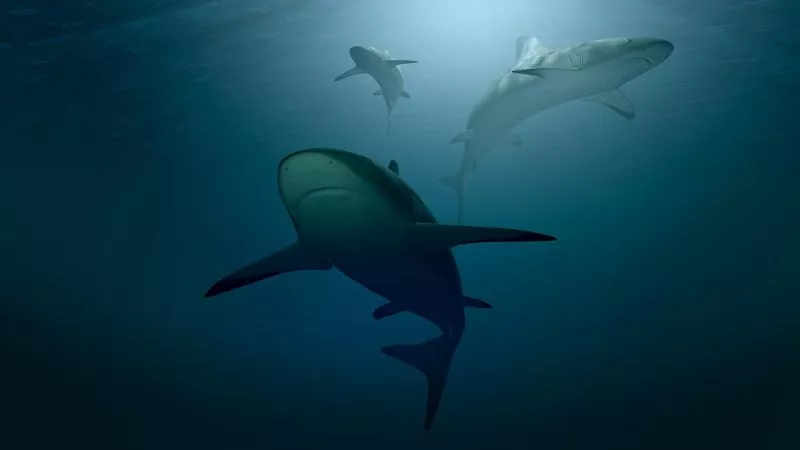
#3. Personalities
Sharks have a bad reputation for being mindless creatures that only think about their next meal. But Sharks actually have their own, distinct personalities. It turns out that Bruce from Finding Nemo wasn’t kidding when he told us that Sharks are not mindless eating machines! Researchers at Australia’s Macquarie University did a study involving the strange looking Port Jackson Shark. They expose the Sharks to different stimuli that was unfamiliar to them, and noted that individual Sharks showed unique and consistent reactions. Some Sharks were naturally more inquisitive or bold than their fellow Sharks, even of the same species. This means that Sharks can be even more unpredictable than we thought, because of variations in their personalities. And this makes sense when you examine Sharks from a biological standpoint. They have a similar brain mass to body mass ratio to mammals and other higher vertebrate species. Sharks are known to exhibit curiosity and problem solving skills, much in the way that less fearsome dolphins do. They also have various methods of communication, allowing them to work together with their fellow Sharks and develop interesting social structures. It’s possible that they even tell each other when and where good sources of food can be found.
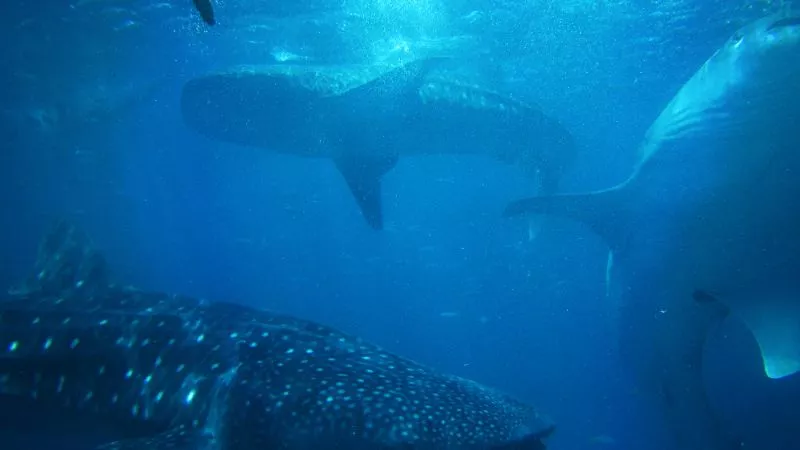
#4. Sixth Sense
It was once thought that Sharks had poor eyesight, but now we know that Sharks can actually see quite well. Visual strength varies amongst the different species, but that’s not the only tool in their hunting arsenal. Sharks are actually able to pick up on small electrical fields generated by other ocean creatures. Although it’s located near their nostrils, it’s different from their sense of smell. Located on the underside of a Shark’s snout are small pores known as Ampullae of Lorenzini. Inside these pores are long bulbs leading to nerves placed just below the Shark’s skin. When electrical signals are received, they’re transmitted through the bulbs and then they send a signal to the Shark’s brain. Different kinds of Sharks have different numbers of Ampullae of Lorenzini, and they’re useful for locating prey in murky waters. The pores are generally more numerous around a Shark’s mouth, letting them know when something is within chomping distance. For Sharks with compromised eyesight, like the Hammerhead, these are absolutely essential. Although the hammerheads eyes are unfortunately placed, there extra snout area means they can accommodate more of these pores. They also help Sharks on the right path when it comes time for them to migrate.
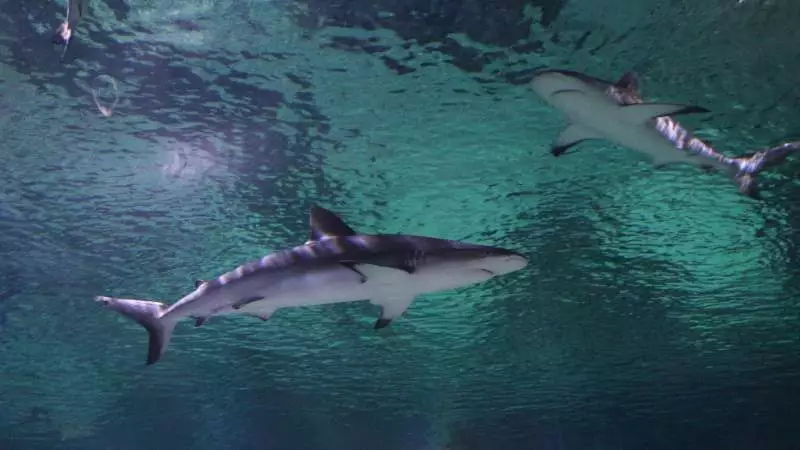
#5. Seventh Sense
Sharks have a legendary sense of smell, which helps them locate their next meal. But in addition to this well-known sense, they have yet another method of tracking their prey. We told you about the ampullae of Lorenzini, and located in the same area is the Shark’s lateral line. Structurally, this line is similar to the Ampullary pores. It’s made up of Subdermal canals that use a system of tubes to reach the surface of the Shark’s skin. These canals contain Neuromasts, which are clusters of sensory hair cells. These canals start at the Shark’s head and continue down each side of its body horizontally. When a Shark is swimming, water pushes against the tips of these cells and stimulates the nerves. This allows the Shark to pick up on my new changes in the ocean currents. They can tell when the change is due to another animal, and this helps them better hone in on prey. It also helps them navigate around their environment by helping them perceive obstacles in their path. This means that when a Shark is swimming, it is being constantly updated about its surroundings because of this system. It’s like they set their phone to display all notifications at once! It’s time for our trivia Question! We know that Sharks look pretty prehistoric, but some of them actually live for incredibly long periods of time. What is the oldest living Shark on record, and what type of Shark is it?
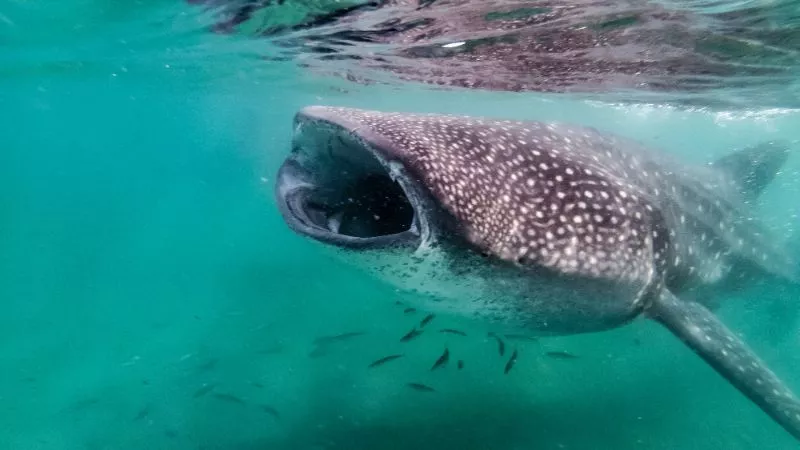
#6. Teeth
Sharks are known for having massive teeth, but that’s actually not accurate when it comes to several species of Sharks. There are three species of Planktivores Sharks, meaning those who feed on plankton. These are the Whale Shark, basking Shark, and megamouth Shark. Whale Sharks are enormous, growing up to about 32 feet in length on average and weighing over 20,000 pounds. The Basking Shark isn’t far behind, with adults generally reaching about 20-26 feet in length. Although these Sharks have terrifyingly huge mouths, they’re no threat to humans. They’re filter feeders, and their melts are specially designed to filter all of the delicious plankton and jellyfish out of ocean water. Their teeth are incredibly small, but numerous. Basking Sharks tend to drift around with their mouths open just hoping something delicious will end up in their bellies, while megamouth and Whale Sharks tend to seek prey more actively. Their gill slits are internally lined with gill Rakers that help them filter out their food. Unlike Whales that use baleen to filter their food, these Sharks suck water into their mouths and over the filtering pads that cover their throats. These pads are filled with pores that act as a sieve, capturing particles of food.
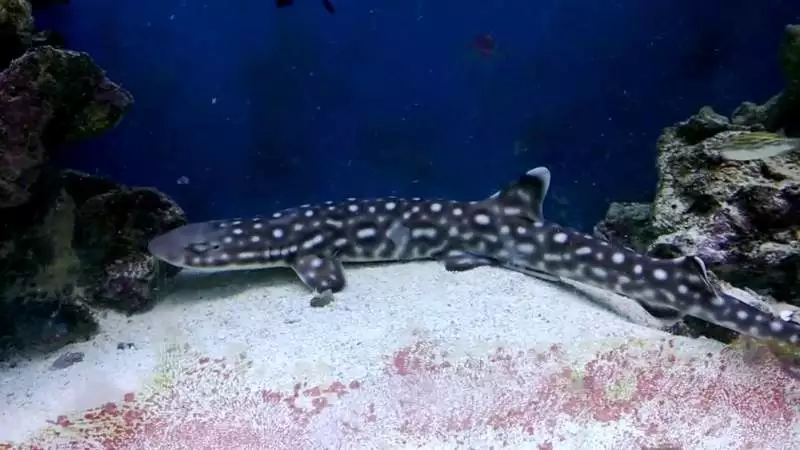
#7. Scaredy Cats
You might think that Sharks are incredibly bold and fearless, but some Sharks have a defensive behavior that is pretty surprising. The Cat Shark genus is full of small, strange looking Sharks that seem a stark contrast to the more stereotypical Sharks. Some Sharks are even known as shy Sharks, because of their behavior when threatened. These predators will basically curl up into a ball and hope for the best in the face of danger. They cover their eyes with their tails, perhaps assuming that if they can’t see the predator, it can’t see them. As you might expect, this method of defense isn’t very effective, and Cat Sharks frequently find themselves snacks for larger Sharks. It’s thought that by contorting their bodies like this, it makes it more difficult for larger predators to swallow them. In addition to this, some Cat Sharks like this striped Cat Shark are known to hide amongst vegetation or rocks to try to avoid predators. They’re nocturnal, so they spend their days lying motionless while hiding as well as they possibly can. Not exactly the face of an intimidating ocean predator that humans would be right to fear.
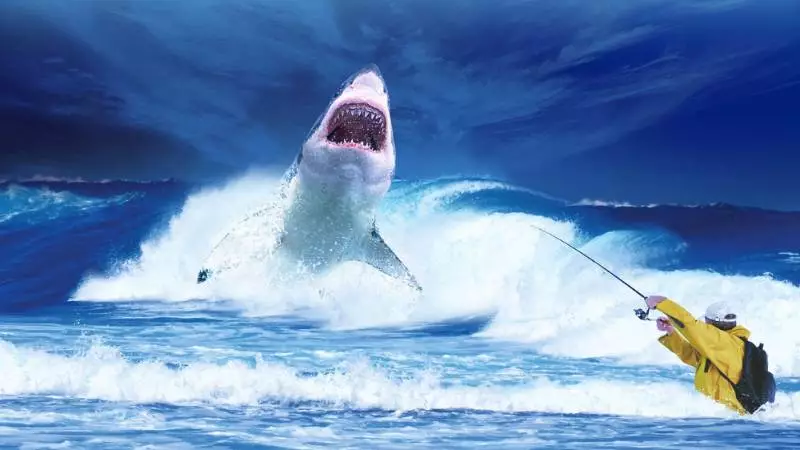
#8. Shark Attacks
We’ve all heard statistics about Shark attacks, and although they’re not overly common and are rarely fatal, they’re enough to be terrifying. But even calling these events “Attacks” is hyperbole. Have you ever seen a Shark attacking prey? Take for example, the great white, which will burst forth from the depths of the ocean at top speed, ambushing its quarry and disabling it with one hit. This takes a massive amount of energy on behalf of the Shark, and it’s not going to do this for something it isn’t sure it wants to eat. While we’re sure this is of little comfort to anyone on the receiving end of this, Sharks are in the habit of mouthing unfamiliar creatures. Unfortunately for humans, a small tentative bite for a Shark equals a bad time for us. Sharks are naturally curious creatures, and they’ve also been witnessed mouthing parts of boats as well. Something else to consider is the fact that we aren’t great at seeing and interpreting Shark signals. When a Shark opens its mouth at another Shark, it’s saying “Back Off!” However, because we may not even notice the Shark until it’s too late, the Shark is likely to interpret us not leaving as a threat. Thus, they’ll give the human a warning bite the same as they would another Shark.
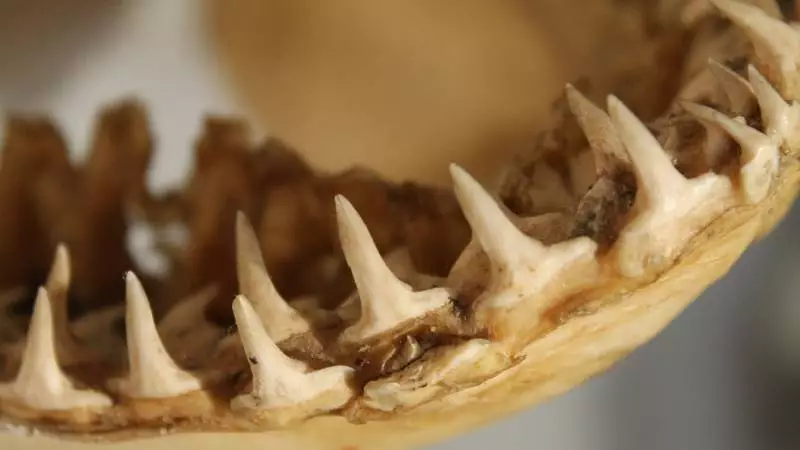
#9. Picky Eaters
Sharks are often pictured as being willing to eat anything and everything that they see. But this simply isn’t true, and something as simple as basic biology can disprove this. Just look at the teeth of a Shark and you’ll have a clue as to what type of food it eats. Sharks that eat squid and fish have sharp, pointy teeth to allow them to grip their slippery prey more effectively. If a Shark has flat teeth designed for crunching and grinding, that Shark prefers to feed on crustaceans and mollusks. Specific Sharks tend to prefer a certain type of prey and rarely deviate from that. Sharks can eat up to 10% of their body weight per week, which isn’t that much relatively. Because of this, it needs to be consume using as little energy as possible and must provide maximum nutritional benefit to the Shark. While a great white has serrated teeth that are great at ripping and tearing, you won’t find them wasting time and energy grappling with eels. Their digestive tracts are also quite slow, meaning they don’t want to risk slowing it down further. By eating something it isn’t designed to handle. Some Sharks, like the Tiger Shark, have a reputation for eating anything and everything, but overall Sharks stick to their specific diets.
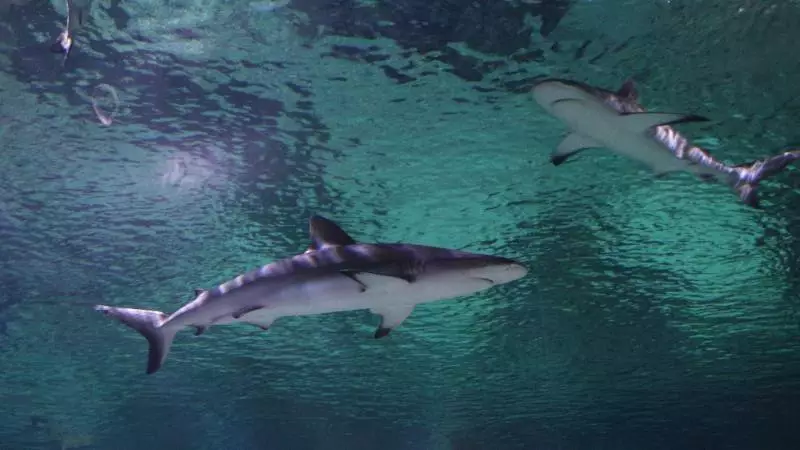
#10. Just Keep Swimming
They’re been a long running myth that Sharks need to swim continuously in order to breathe. Sharks use their gills in order to breathe, so they need a constant source of water flowing over them. The membranes in the gills, use tiny blood vessels to extract oxygen from the water. Tissues in the gills also dispose of carbon dioxide as well. But different species of Sharks use different methods for pumping water over their gills. Some Sharks, such as great Whites, Makos, and Whale Sharks are obligate Ram ventilators, which means that they only ventilate their gills by swimming quickly with their mouths open. For these Sharks, continuously swimming is a necessity. But many Sharks don’t use this method, and thus are able to stop swimming safely. Sharks such as nurse and bullheads breathe using a method known as buccal pumping. The buccal muscles in the Shark’s mouths to draw water into the mouth and over the gills. These work even if the Shark is stationary. These Sharks also have respiratory openings behind their eyes, so the Sharks can breathe if they’re covered in sand as well. Some Sharks, such as the Tiger Shark, can use either method depending on how quickly or slowly they’re swimming. Scientists use radiocarbon dating to determine the ages of Greenland Sharks and found one that was about 400 years old! These rare Sharks were long thought to live for a very long time, but only recently have we been able to understand exactly how long.

Pranav Bhardwaj is the ultimate entertainment aficionado, with an unbridled passion for all things pop culture. With a keen eye for the latest trends and a deep love for music, movies, and television, Pranav has made it his mission to bring the world of entertainment to life through his words.
